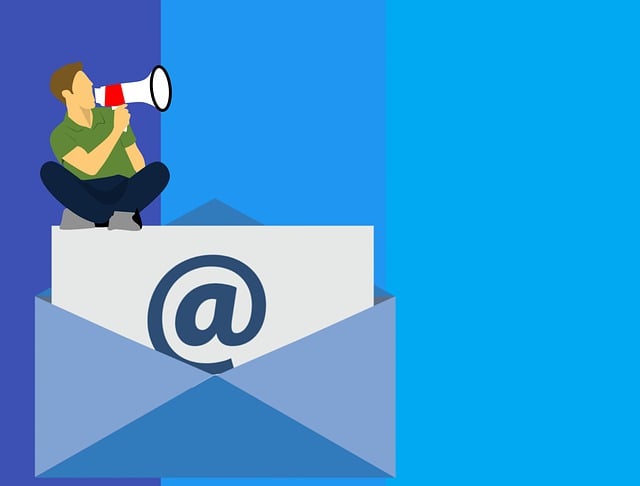In the vast landscape of digital marketing, email remains a steadfast and powerful tool for engaging with your audience. But how do you know if your email campaigns are truly effective?
Enter email marketing metrics, the key to unlocking valuable insights and optimizing your strategies.
Just like a skilled detective, email marketing metrics allow you to delve deep into the behaviors and preferences of your subscribers. With a comprehensive review of these metrics, you can measure the performance of your campaigns, identify your target audience, and optimize your email content to drive higher engagement rates.
But it doesn’t stop there. Email marketing metrics also provide valuable insights into improving email deliverability and refining your overall marketing strategies. By analyzing the data and making data-driven decisions, you can ensure that your emails are reaching the right people at the right time, with content that resonates and drives results.
In this article, we will explore the benefits of email marketing metrics in a comprehensive review, giving you the tools you need to elevate your email marketing game and achieve measurable success.
So, grab your detective hat and let’s dive into the world of email marketing metrics.
Key Takeaways
- Email marketing metrics provide valuable insights into subscriber behavior and preferences.
- Monitoring delivery rates and bounce rates ensures that emails reach the intended recipients.
- Conversion rates and ROI metrics offer insights into campaign effectiveness and financial impact.
- Analyzing metrics allows for data-driven decisions and optimization of email marketing strategies.
Understand Subscriber Behavior
You can gain valuable insights into your subscribers’ behavior using email marketing metrics. Analyzing engagement patterns and tracking open rates allows you to understand how your subscribers interact with your emails.
By monitoring open rates, you can determine which subject lines and email content are most effective in capturing your audience’s attention. This data-driven approach helps you tailor your future email campaigns to better resonate with your subscribers.
Additionally, tracking engagement patterns, such as click-through rates and time spent on your website, provides valuable information about the effectiveness of your email content and the level of interest it generates.
Understanding your subscribers’ behavior through email marketing metrics allows you to optimize your strategies and deliver more targeted and engaging content.
Moving forward, let’s explore how you can measure campaign performance to further enhance your email marketing efforts.
Measure Campaign Performance
When measuring campaign performance, it’s crucial to monitor delivery rates and bounce rates to ensure that your emails are reaching the intended recipients.
By evaluating conversion rates, you can determine the effectiveness of your campaigns in driving desired actions from subscribers.
Additionally, analyzing the return on investment (ROI) of your email marketing efforts provides valuable insights into the financial impact of your campaigns.
Monitor delivery rates and bounce rates
Monitoring delivery rates and bounce rates is essential for understanding the effectiveness of your email marketing campaigns. By tracking these metrics, you can gain valuable insights into how well your emails are reaching your audience and whether they are being successfully delivered.
Improving audience engagement and enhancing deliverability rates are crucial for achieving your marketing goals. A high delivery rate indicates that your emails are successfully reaching their intended recipients, while a low bounce rate suggests that your emails are resonating with your audience and avoiding being marked as spam.
By closely monitoring these metrics, you can identify any issues or areas for improvement in your email marketing strategy. This will help you optimize your campaigns and ensure that you are getting the most out of your email marketing efforts.
Transitioning into the next section about evaluating conversion rates and ROI, it is important to analyze these metrics to determine the overall success of your email marketing campaigns.
Evaluate conversion rates and ROI
By assessing conversion rates and ROI, you can uncover the golden nuggets that reveal the true value of your email marketing campaigns, like a treasure map leading to untapped potential and increased profitability.
Evaluating email effectiveness and measuring email performance are crucial steps in understanding the impact of your campaigns on your bottom line. Conversion rates provide insights into how many recipients are taking the desired action, such as making a purchase or signing up for a service. ROI, on the other hand, calculates the return on investment, helping you determine if your email marketing efforts are generating a positive financial outcome.
These metrics allow you to make data-driven decisions, optimize your campaigns, and allocate resources more effectively. As you transition into the next section about identifying your target audience, you can leverage these metrics to tailor your messages and ensure maximum engagement.
Identify Target Audience
To effectively identify your target audience, use metrics to analyze and identify your most engaged subscribers. By understanding which subscribers are actively engaging with your emails, you can focus your efforts on catering to their preferences and needs.
Additionally, segment your audience based on demographics and behavior to create personalized and targeted campaigns that resonate with specific groups. This approach allows you to maximize the impact of your email marketing efforts and achieve higher conversion rates.
Use metrics to identify your most engaged subscribers
Engaging with your subscribers is key, and using metrics can help you identify who your most engaged subscribers are. By analyzing engagement patterns such as open rates, click-through rates, and conversion rates, you can gain valuable insights into the behavior of your subscribers.
Metrics allow you to pinpoint which subscribers consistently interact with your emails, indicating a higher level of engagement. These are the subscribers who are more likely to be interested in your content and potentially convert into customers. Identifying and focusing on these active subscribers enables you to tailor your marketing efforts and provide them with relevant and personalized content.
Retaining active subscribers is crucial for the success of your email marketing campaigns. By understanding their preferences and interests, you can create targeted campaigns that resonate with them. Segment your audience based on demographics and behavior to maximize the impact of your email marketing strategy.
Segment your audience based on demographics and behavior
Segmenting your audience based on their demographics and behavior allows you to deliver personalized and targeted content that resonates with their specific interests and preferences. This segmentation strategy enables you to tailor your email campaigns to different groups within your subscriber base, increasing engagement and conversion rates.
Here are four effective personalization techniques you can employ:
-
Demographic segmentation: Divide your audience based on factors such as age, location, gender, and occupation. This allows you to create content that is relevant to their demographic characteristics.
-
Behavioral segmentation: Analyze how subscribers interact with your emails, such as open rates, click-through rates, and purchase history. Use this data to send targeted emails based on their past behaviors.
-
Interest-based segmentation: Categorize subscribers into groups based on their preferences, hobbies, or areas of interest. This allows you to send content that aligns with their specific passions.
-
Lifecycle segmentation: Understand where subscribers are in their customer journey, such as new subscribers, loyal customers, or those who have lapsed. Tailor your emails accordingly to nurture them towards conversion.
By implementing these segmentation strategies, you can optimize email content to deliver personalized messages that drive higher engagement and conversion rates. Now, let’s explore how to further enhance your email marketing efforts by optimizing your email content.
Optimize Email Content
Improve the effectiveness of your email content by utilizing metrics to analyze and enhance its performance. To increase open rates and enhance subject lines, it is crucial to understand what resonates with your audience. By leveraging email marketing metrics, you can gather valuable insights on how recipients engage with your content and make data-driven decisions to optimize it.
Consider the following table that showcases the performance of different subject lines based on open rates:
| Subject Line | Open Rate |
|---|---|
| "Exclusive Offer Inside!" | 22% |
| "Limited Time Discount!" | 18% |
| "Don’t Miss Out!" | 15% |
| "Important Announcement" | 11% |
Analyzing the data above, you can see that subject lines focusing on exclusivity and urgency tend to perform better. Armed with this knowledge, you can tailor your email content to align with these preferences, ultimately improving engagement and conversion rates.
By optimizing your email content based on metrics, you can enhance its performance and effectively reach your target audience. Transitioning into the next section, let’s explore how to improve email deliverability.
Improve Email Deliverability
To improve your email deliverability, it’s crucial to monitor metrics related to spam complaints and unsubscribes. By keeping a close eye on these indicators, you can identify any issues that may be negatively impacting your deliverability rates.
Additionally, implementing best practices can significantly enhance your chances of reaching your recipients’ inboxes. This includes regularly cleaning your email list and using double opt-in methods.
Remember, improving email deliverability is an ongoing process that requires constant monitoring and adjustment.
Monitor metrics related to spam complaints and unsubscribes
By keeping an eye on metrics like spam complaints and unsubscribes, you can gauge the success of your email marketing campaign and prevent it from going down in flames. Monitoring these metrics is crucial for optimizing email engagement and reducing spam.
Here’s a 4 item numeric list that highlights the importance of tracking spam complaints and unsubscribes:
-
Identify problematic content: High spam complaints or unsubscribes could indicate that your emails are being flagged as spam. Analyze the content to identify potential issues and make necessary adjustments.
-
Improve targeting: A spike in unsubscribes might indicate that you’re not effectively targeting your audience. Use metrics to refine your email list and ensure you’re reaching the right people.
-
Enhance email frequency: Monitoring spam complaints can help you strike the right balance with your email frequency. Adjust the frequency based on feedback to avoid overwhelming your subscribers.
-
Maintain sender reputation: Consistently monitoring spam complaints and unsubscribes allows you to address any issues promptly, maintain a positive sender reputation, and ensure your emails reach the intended recipients.
By closely monitoring these metrics, you can take proactive measures to enhance email deliverability and optimize your email marketing campaign.
Implement best practices to enhance email deliverability
Now that you understand the importance of monitoring metrics related to spam complaints and unsubscribes, it’s time to implement best practices to enhance email deliverability.
Email filtering algorithms have become increasingly sophisticated, making it crucial for marketers to optimize their emails to ensure they reach the intended recipients’ inboxes.
By focusing on email engagement metrics, such as open rates, click-through rates, and conversion rates, you can gain insights into how your audience is interacting with your emails.
Analyzing these metrics allows you to identify areas for improvement and make data-driven decisions to optimize your email marketing campaigns.
By continuously refining your strategies based on these insights, you can effectively increase email deliverability, engagement, and ultimately, drive better results.
Transitioning into the subsequent section about ‘refine marketing strategies’, let’s explore how to leverage these metrics to enhance your overall email marketing approach.
Refine Marketing Strategies
Revamp your marketing strategies with the power of email marketing metrics. By utilizing data analysis provided by email marketing metrics, you can refine your marketing strategies to maximize customer retention. Understanding the effectiveness of your email campaigns through metrics such as open rates, click-through rates, and conversion rates allows you to make data-driven decisions that will improve your overall marketing performance.
To paint a clearer picture, consider the following table which showcases the email marketing metrics and their corresponding benchmarks:
| Metric | Benchmark |
|---|---|
| Open Rate | 20% – 30% |
| Click-through Rate | 3% – 5% |
| Conversion Rate | 2% – 4% |
Analyzing these metrics will enable you to identify areas for improvement and optimize your email marketing strategies. For instance, if your open rates are below the benchmark, you may need to work on crafting more compelling subject lines or improving the timing of your emails. By continuously monitoring and refining your strategies based on email marketing metrics, you can enhance customer retention and drive better results for your business.
Frequently Asked Questions
How can I effectively segment my email subscribers based on their behavior?
To effectively segment your email subscribers based on their behavior, you can employ segmentation strategies and behavioral analysis.
Think of it as sifting through a treasure trove of data, like a skilled archaeologist carefully examining artifacts. By analyzing your subscribers’ actions, such as email opens, clicks, and purchases, you can create distinct segments based on their engagement levels, preferences, and purchasing habits.
This allows you to tailor your email campaigns, resulting in higher engagement and conversion rates.
What are some key metrics to track in order to measure the success of my email campaigns?
To measure the success of your email campaigns, email campaign analysis is crucial. It allows you to track key metrics that provide valuable insights into your campaign performance.
Tracking metrics such as open rates, click-through rates, conversion rates, and unsubscribe rates enables you to evaluate the effectiveness of your email campaigns. By monitoring these metrics, you can identify areas for improvement, optimize your strategies, and ultimately drive better results.
The importance of tracking these metrics can’t be overstated in achieving email marketing success.
How can I identify the specific demographics and interests of my target audience through email marketing metrics?
To identify your target audience and analyze their preferences through email marketing metrics, start by examining key indicators such as open rates, click-through rates, and conversion rates.
Look for patterns and trends in these metrics to understand who your most engaged subscribers are.
Additionally, use segmentation and personalization techniques to gather more specific data about your audience’s demographics and interests.
By analyzing these metrics, you can tailor your email campaigns to effectively engage and convert your target audience.
What are some best practices for improving open rates and click-through rates of my email content?
To improve open rates and click-through rates of your email content, focus on improving engagement and utilizing personalization techniques.
Did you know that personalized emails have a 29% higher open rate compared to generic ones? Start by crafting compelling subject lines that resonate with your audience.
Then, segment your email list based on demographics and interests to send targeted content. Use dynamic content and personalized recommendations to increase click-through rates.
Remember, engagement is key to driving better email performance.
What strategies can I implement to ensure my emails are delivered to the inbox rather than the spam folder?
To improve email deliverability and avoid spam filters, you need to follow key strategies.
First, maintain a clean and updated email list by regularly removing inactive or invalid addresses.
Second, use a reputable email service provider that has strong anti-spam measures in place.
Third, personalize your emails and avoid using spam trigger words or excessive punctuation.
Fourth, regularly monitor your email deliverability metrics and adjust your strategy accordingly.
Following these strategies will help ensure that your emails land in the inbox instead of the spam folder.
Conclusion
Now that you’ve delved into the benefits of email marketing metrics, it’s clear that understanding subscriber behavior is crucial for success. By measuring campaign performance, you can identify what works and what doesn’t. This allows you to optimize your email content for maximum impact.
Furthermore, email metrics help you identify your target audience and refine your marketing strategies accordingly. With improved email deliverability, you can ensure your messages reach the right people at the right time.
Embrace the power of data-driven insights and unlock the true potential of email marketing.







